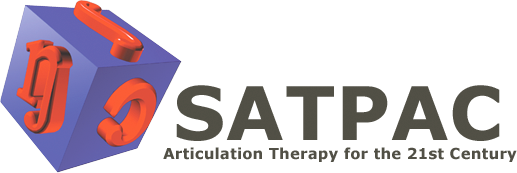New Approach to Containing Caseload Size
December 6, 2011 6:06 pm
![]() for Speech-Language Pathologists & Audiologists
for Speech-Language Pathologists & Audiologists
February 7, 2005 – Vol. 15 – Issue 6 – Page 10
By Stephen Sacks, MA, CCC-SLP
As school speech-language pathologists, we have been faced with a dilemma these past few years. With the emphasis on literacy and the expectation that we will work with students who have phonemic awareness deficits, as well as reading and writing problems, caseload management has become a nightmare.
The idea that we will not work with traditional areas such as articulation, fluency and voice when students are showing academic proficiency has become a controversial issue in our field. This has left teachers raising their eyebrows, as if to ask, “If you don’t remediate their speech problems, who will?”
Lindsey Jessup, MA, CCC-SLP, DIS coordinator in the Fresno Unified School District, in Fresno, CA, has developed an innovative approach to deal with this problem. Students who would benefit from speech therapy but do not have severe deficits are seen on an informal basis for short-term therapy. This model can be used for other deficit areas as well.
“No Child Left Behind [NCLB] allows us to provide intervention before students are referred to special education,” stated Jessup. “This meets the three-tiered intervention model of NCLB.”
Elin Oppliger, MA, CCC-SLP, has used this approach in several different areas in the Fresno schools.
“I have worked with groups of students using the Visualizing/Verbalizing Program to improve language expression as well as the LiPS [Lindamood Phoneme Sequencing] Program to improve phonemic awareness,” said Oppliger.1,2 “My teachers really appreciate the extra help that their students get in those areas.”
This approach also works with older single-sound articulation students for problems such as lateral lisps and /r/, she said. “This short-term therapy sometimes is just the extra push these students need to remediate their deficits.”
Additionally, preschool, kindergarten and first-grade students have received oral-motor work to develop correct movements, typically for /s/ and /r/ problems. The goal is to develop correct oral-motor skills leading to correct speech development so students will not need therapy when they reach third grade.
I have found this model to be liberating in terms of paperwork reduction and an effective way to do therapy. Last year, I had two students who were particularly memorable: a third-grader with a frontal lisp and a second-grader with a lateral lisp.
The third-grader’s mother was taking English classes at the school, so she sat in on the sessions. After five weekly sessions the student had completely remediated her problem and was using correct /s/ sounds in conversational speech.
The dramatic success of this student was attributed to 10 minutes of correct daily practice of the prerequisite oral-motor skills for /s/.3 The Systematic Articulation Training Program Accessing Computers (SATPAC) Program then was used to develop systematic motor memory patterns for the /s/ sound using nonsense CVCCVC combinations.4 Finally, the SATPAC transfer phase was used to move to real phrases, sentences and contrasting sentences.
It was a different story for the second-grader with a lateral lisp. After two months of weekly sessions, there was no consistency of responses. One week he would seem to develop the appropriate prerequisite oral-motor skills, and the next week they would be gone.
The student was placed into therapy with an individual education plan (IEP). He had sessions twice a week and was able to progress with lots of repetitions. He was dismissed from therapy after a year.
This model of therapy allowed me to make appropriate decisions for these two students because I had the freedom to work with them and determine what they would need.
Like Oppliger, I also am exploring oral-motor therapy with younger students in kindergarten and first grade for /r/ and /s/ sounds.5 Parents are sitting in on the sessions and watching the skill being taught. They return periodically for the next step. While it is too early to say whether this approach will keep students out of speech therapy in the future, the preliminary results are encouraging.
This model employed by the Fresno Unified School District is a win-win situation for all involved. Speech-language pathologists can do therapy without horrendous amounts of paperwork and keep their caseload numbers at manageable levels. Teachers see their students receiving help, and parents are pleased by the progress their children show in the areas of speech, language and literacy.
References
1. Bell, N. (1991). Visualizing and Verbalizing for Language Comprehension and Thinking. San Luis Obispo, CA: Gander Publishing.
2. Lindamood, P., Lindamood, P. (1998). Lindamood Phoneme Sequencing (LiPS) Program for Reading, Spelling and Speech. Austin, TX: Pro-Ed.
3. Sacks, S. (2004). Multimodality approach to remediating /s/ sound, ADVANCE, 14 (26): 11.
4. Sacks, S., Shine, R. (2004). SATPAC (Systematic Articulation Training Program Accessing Computers). Fresno, CA: SATPAC Speech LLC.
5. Sacks, S. (2003). Multimodality approach to articulation, ADVANCE, 13 (43): 9.
Stephen Sacks has been a speech-language pathologist in the schools for 25 years. He can be contacted at steve@satpac.com. Lindsey Jessup can be contacted at Lindseyspeech@aol.com.
Copyright å©2005 Merion Publications 2900 Horizon Drive, King of Prussia, PA 19406 – 800-355-5627 Publishers of ADVANCE Newsmagazines www.advanceweb.com
This article was published by ![]() for Speech-Language Pathologists & Audiologists
for Speech-Language Pathologists & Audiologists
February 07, 2005 – Page 10



